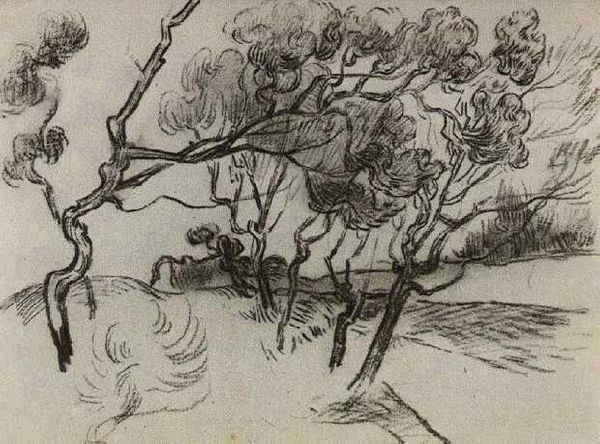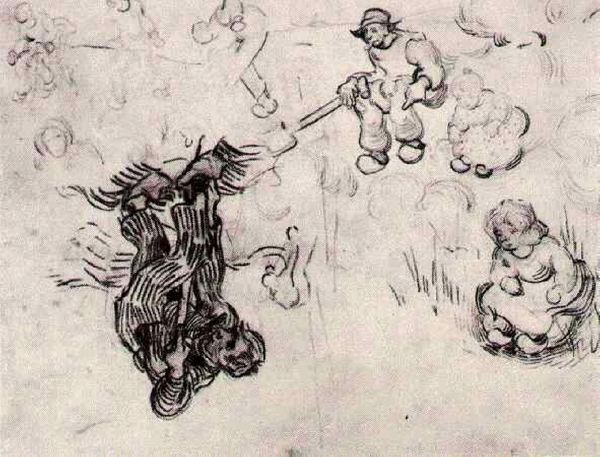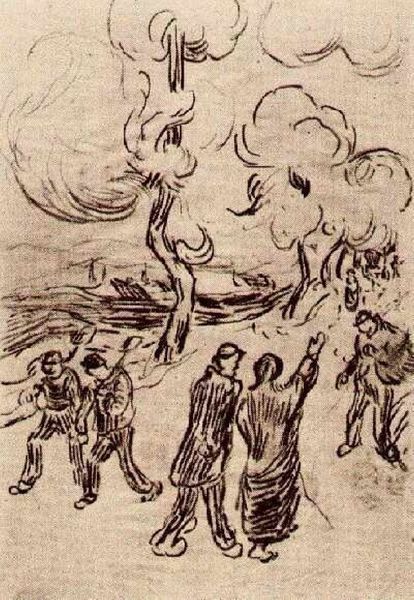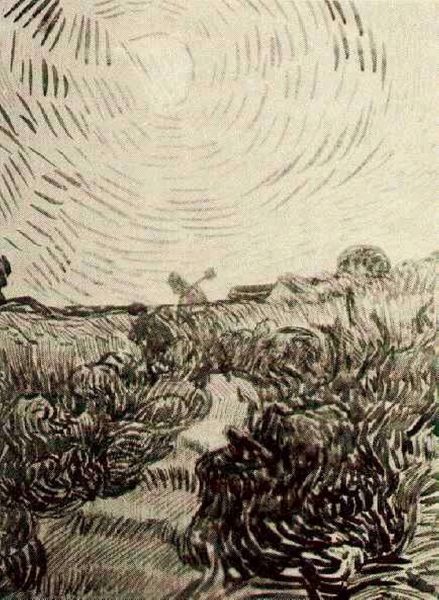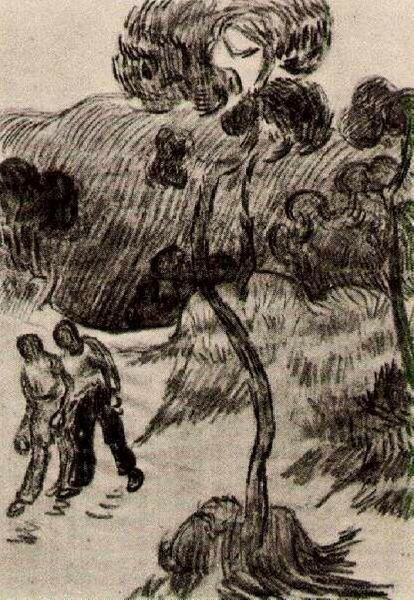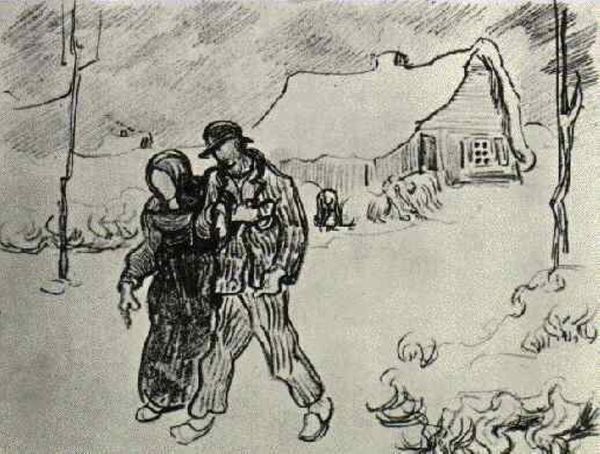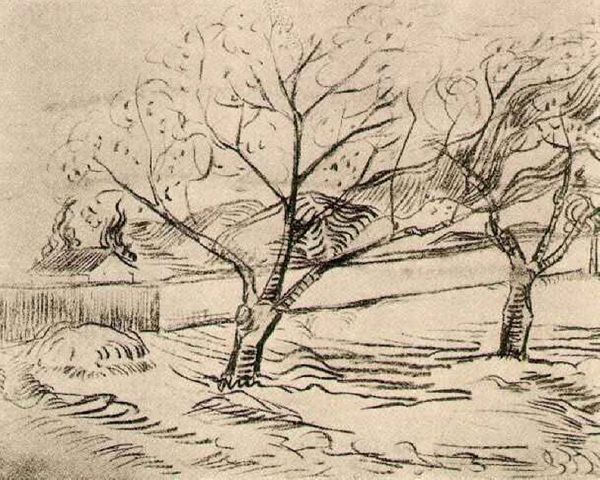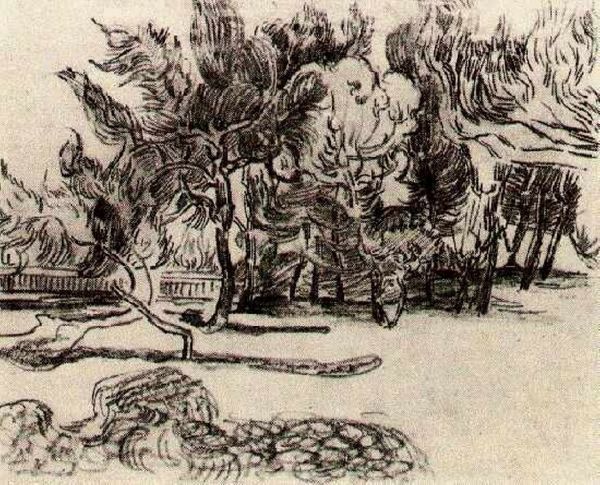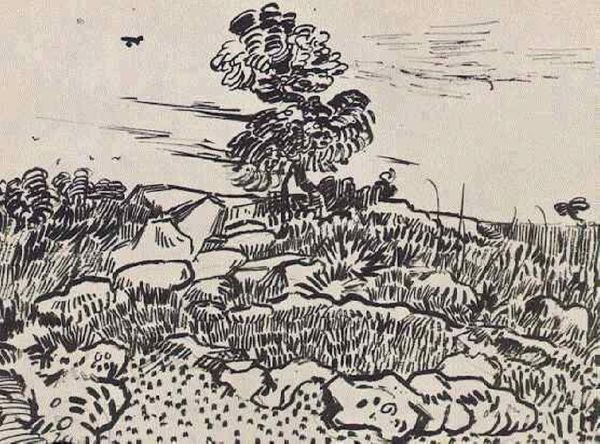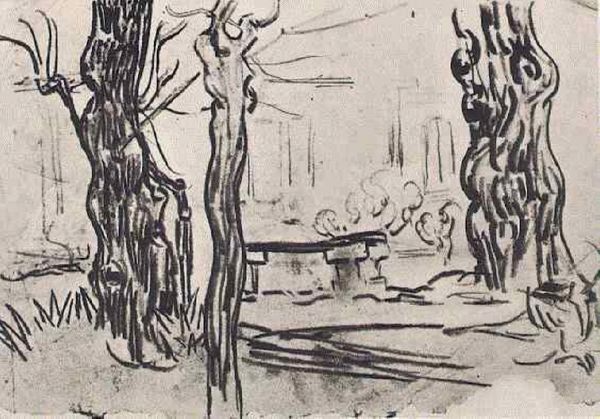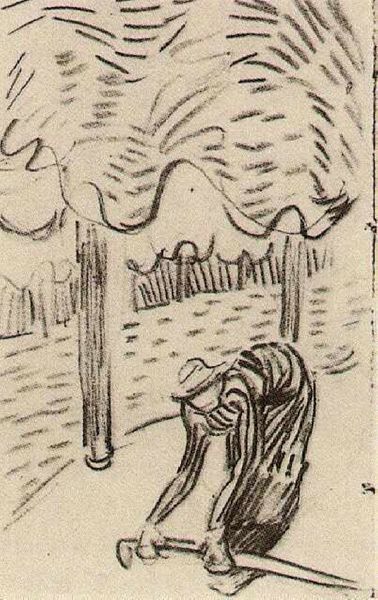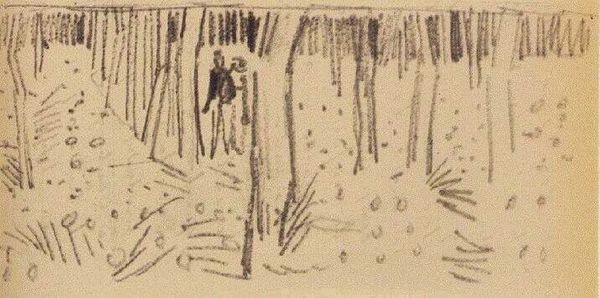
drawing, ink, pencil
#
drawing
#
landscape
#
figuration
#
ink
#
pencil
#
line
#
post-impressionism
Copyright: Public domain
Editor: So here we have Van Gogh's "Two Men on a Road with Pine Trees," made in 1890 with pencil and ink. There's a quiet, almost melancholy mood to it, the way the figures are rendered with these swirling, nervous lines. What do you see in this piece? Curator: I see a fascinating tension between companionship and isolation. The two men walk together, seemingly side by side, but the very frantic energy of Van Gogh's line work suggests an underlying unrest, perhaps even alienation. Consider the pine trees themselves. Throughout different cultures, pines often symbolize immortality, resilience, but here they feel almost agitated, mirroring a psychological landscape rather than a tranquil one. Editor: Psychological landscape – that's interesting. So you think the landscape isn’t just a backdrop, but more of a reflection of their inner states? Curator: Precisely. Look at how the road itself disappears into the horizon, a symbol for the uncertain future. Van Gogh is using these seemingly simple figures and natural elements to explore deeper themes. These symbols allow us access into the artists deepest self, wouldn't you say? Editor: I would agree, especially since it’s made during the last few years of his life. It’s like he's externalizing his own anxieties and sense of being unsettled into the landscape. The rapid strokes almost show urgency, or anxiety, I wonder if it might also reflect the lack of stable environment around the subjects in that the linework has few solid, committed outlines, and perhaps he is considering an unfixed or fluid reading? Curator: An astute observation! His personal struggle becomes a shared human experience. It reminds us that art at its most potent operates as a mirror reflecting universal themes through individual expression. It makes you consider your own emotional landscape, doesn’t it? Editor: Absolutely. It gives a whole new dimension to appreciating art, diving deep into cultural symbols and how the image has changed through time.
Comments
No comments
Be the first to comment and join the conversation on the ultimate creative platform.
